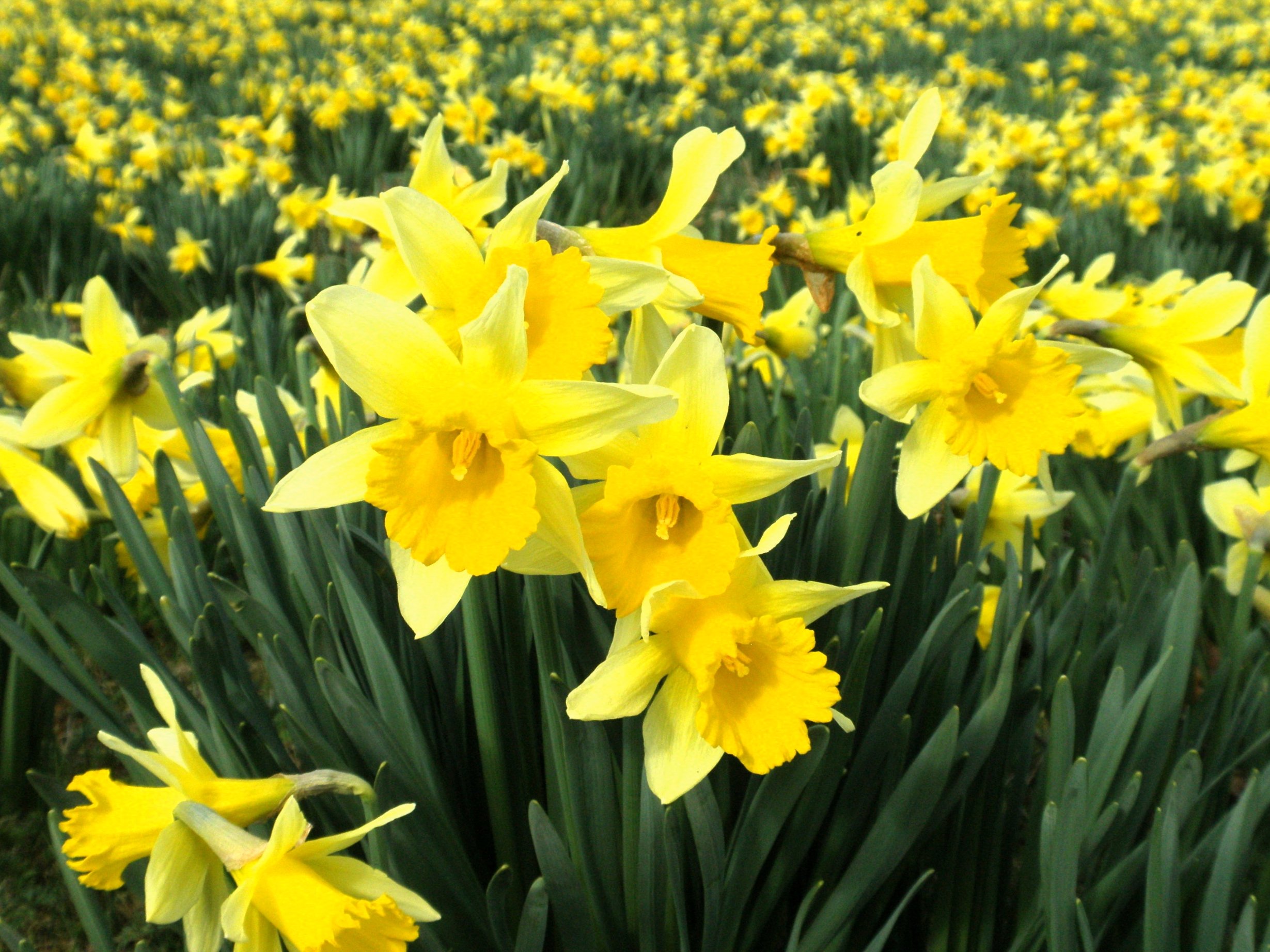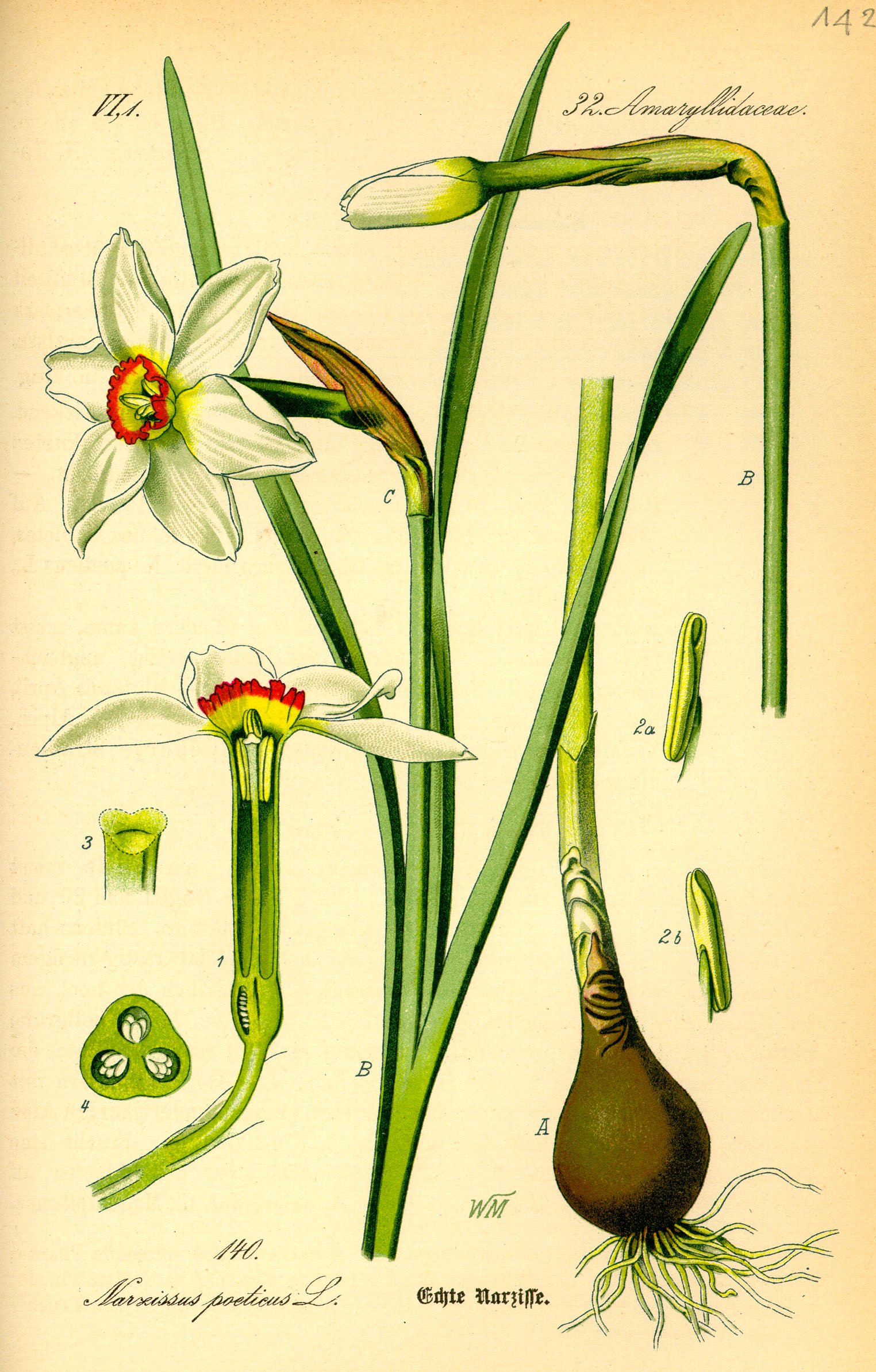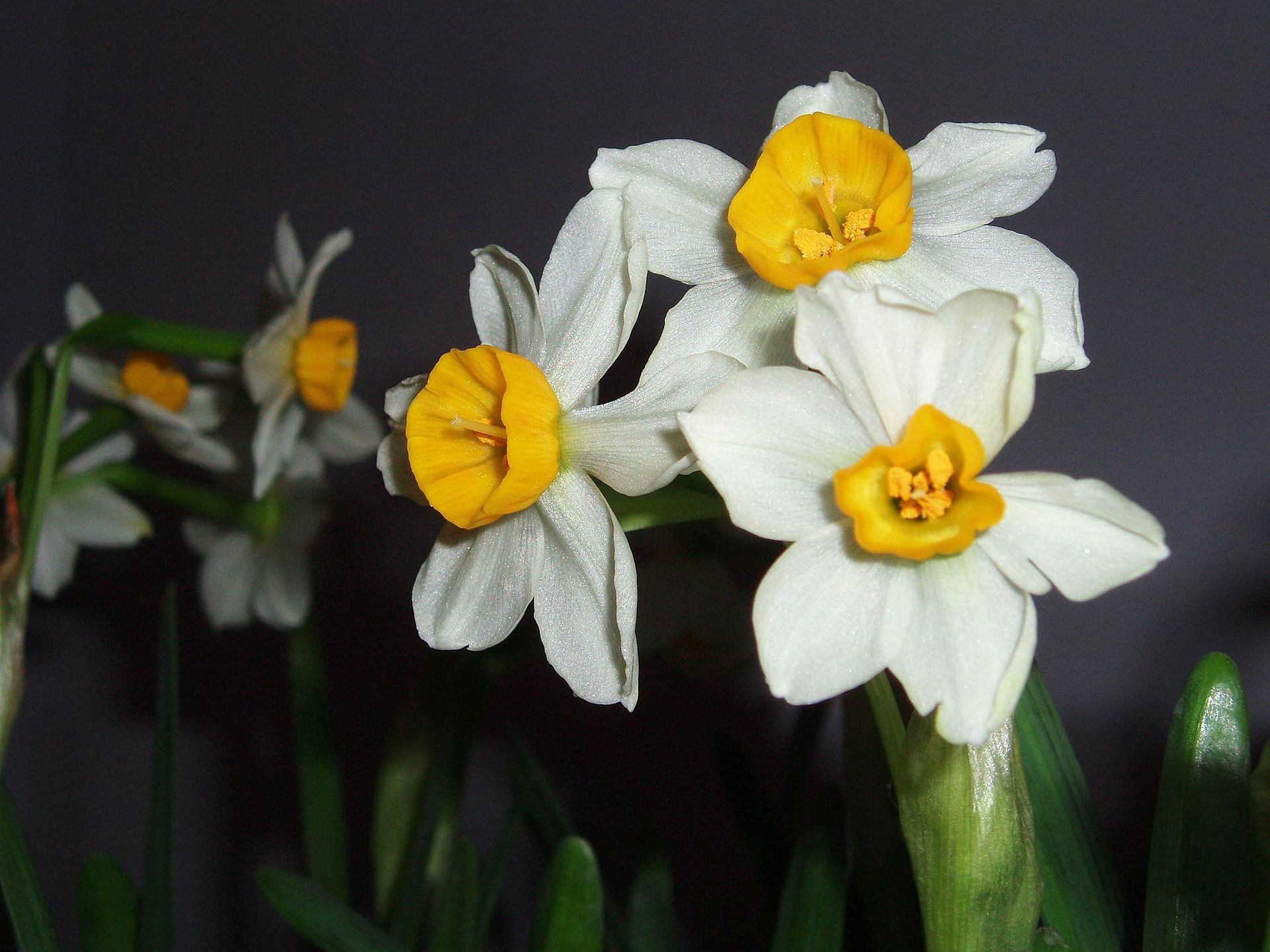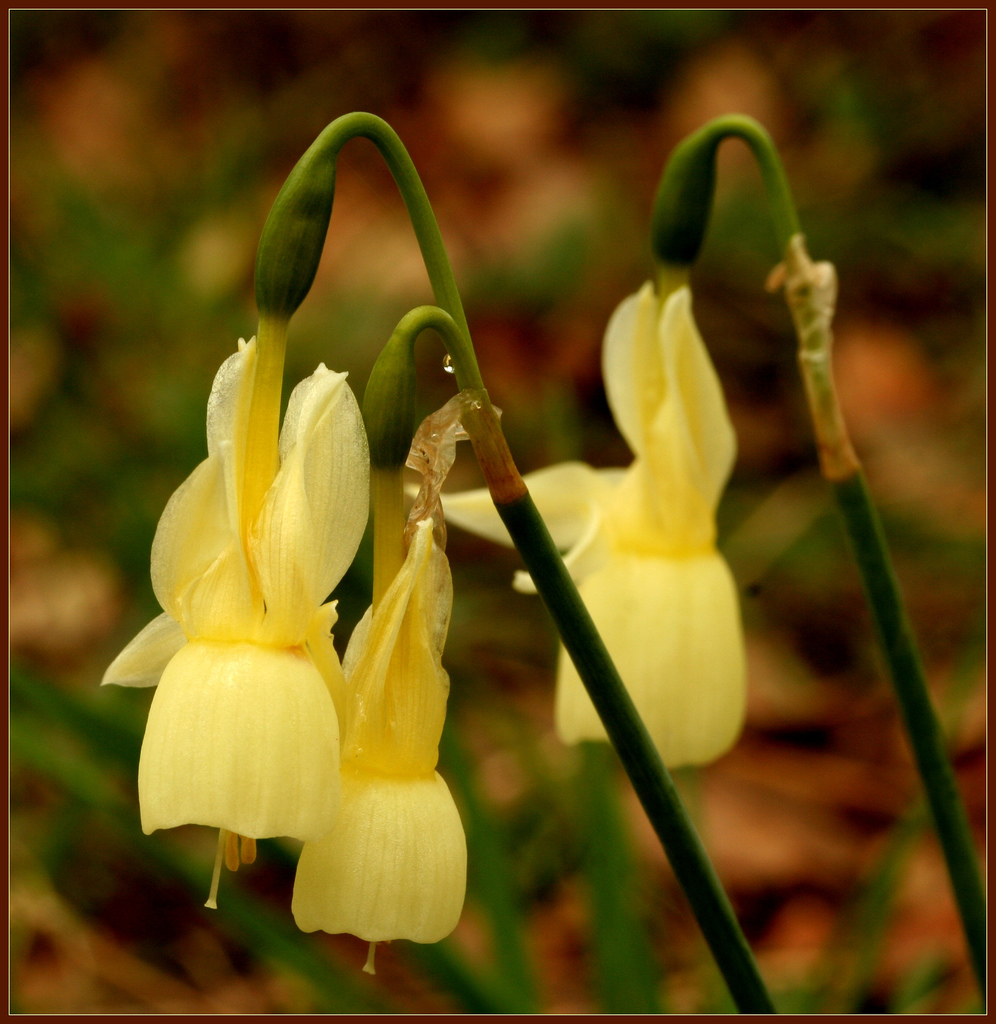Photo by Amanda Slater licensed under CC BY-SA 2.0
Daffodils seem to be everywhere. Their horticultural popularity means that, for many of us, these plants are among the first flowers we see each spring. Daffodils are so commonplace that it's as if they evolved to live in our gardens and nowhere else. Indeed, daffodils have had a long, long history with human civilization, so much so that it is hard to say when our species first started to cohabitate. Our familiarity with these plants belies an intriguing natural history. What follows is a brief overview of the world of daffodils.
If you are like me, then you may have gone through most of your life not noticing much difference between garden variety daffodils. Though many of us will be familiar with only a handful of daffodil species and cultivars, these introductions barely scratch the surface. One may be surprised to learn that as of 2008, more than 28,000 daffodil varieties have been named and that number continues to grow each and every year. Even outside of the garden, there is some serious debate over the number of daffodil species, much of this having to do with what constitutes a species in this group.
Narcissus poeticus
As I write this, all daffodils fall under the genus Narcissus. Estimates as to the number of species within Narcissus range from as few as 50 to as many as 80. The genus itself sits within the family Amaryllidaceae and is believed to have originated somewhere between the late Oligocene and early Miocene, some 18 to 30 million years ago. Despite its current global distribution, Narcissus are largely Mediterranean plants, with peak diversity occurring on the Iberian Peninsula. However, thanks to the aforementioned long and complicated history in cultivation, it has become quite difficult to understand the full range of diversity in form and habitat of many species. To understand this, we first need to understand a bit about their reproductive habits.
Much of the evolution of Narcissus seems to center around floral morphology and geographic isolation. More specifically, the length of the floral tube or "corona" and the position of the sexual organs within, dictates just who can effectively pollinate these plants. The corona itself is not made up of petals or sepals but instead, its tube-like appearance is due to a fusion of the stamens into the famous trumpet-like tube we know and love.
Variation in corona shape and size has led to the evolution of three major pollination strategies within this genus. The first form is the daffodil form, whose stigma is situated at the mouth of the corolla, well beyond the 6 anthers. This form is largely pollinated by larger bees. The second form is the paperwhite form, whose stigma is situated more closely to or completely below the anthers at the mouth of the corona. This form is largely pollinated by various Lepidoptera as well as long tongued bees and flies. The third form is the triandrus form, which exhibits three distinct variations on stigma and anther length, all of which are situated deep within the long, narrow corona. The pendant presentation of the flowers in this group is thought to restrict various butterflies and moths from entering the flower in favor of bees.
Narcissus tazetta. Photo by Fanghong licensed under CC BY-SA 3.0
The variations on these themes has led to much reproductive isolation among various Narcissus populations. Plants that enable one type of pollinator usually do so at the exclusion of others. Reproductive isolation plus geographic isolation brought on by differences in soil types, habitat types, and altitudinal preferences is thought to have led to a rapid radiation of these plants across the Mediterranean. All of this has gotten extremely complicated ever since humans first took a fancy to these bulbs.
Narcissus cyclamineus. Photo by Francine Riez licensed under CC BY-SA 3.0
Reproductive isolation is not perfect in these plants and natural hybrid zones do exist where the ranges of two species overlap. However, hybridization is made much easier with the helping hand of humans. Whether via landscape disturbance or direct intervention, human activity has caused an uptick in Narcissus hybridization. For centuries, we have been mixing these plants and moving them around with little to no record as to where they originated. What's more, populations frequently thought of as native are actually nothing more than naturalized individuals from ancient, long-forgotten introductions. For instance, Narcissus populations in places like China, Japan, and even Great Britain originated in this manner.
All of this mixing, matching, and hybridizing lends to some serious difficulty in delineating species boundaries. It would totally be within the bounds of reason to ask if some of the what we think of as species represent true species or simply geographic varieties on the path to further speciation. This, however, is largely speculative and will require much deeper dives into Narcissus phylogenetics.
Narcissus triandrus. Photo by Dave Gough licensed under CC BY 2.0
Despite all of the confusion surrounding accurate Narcissus taxonomy, there are in fact plenty of true species worth getting to know. These range in form and habit far more than one would expect from horticulture. There are large Narcissus and small Narcissus. There are Narcissus with yellow flowers and Narcissus with white flowers. Some species produce upright flowers and some produce pendant flowers. There are even a handful of fall-blooming Narcissus. The variety of this genus is staggering if you are not prepared for it.
Narcissus viridiflorus - a green, fall-blooming daffodil. Photo by A. Barra licensed under CC BY 3.0
After pollination, the various Narcissus employ a seed dispersal strategy that doesn't get talked about enough in reference to this group. Attached to each hard, black seed are fatty structures known as eliasomes. Eliasomes attract ants. Like many spring flowering plant species around the globe, Narcissus utilize ants as seed dispersers. Ants pick up the seeds and bring them back to their nests. They go about removing the eliasomes and then discard the seed. The seed, safely tucked away in a nutrient-rich ant midden, has a much higher chance of germination and survival than if things were left up to simple chance. It remains to be seen whether or not Narcissus obtain similar seed dispersal benefits from ants outside of their native range. Certainly Narcissus populations persist and naturalize readily, however, I am not aware if ants have any part in the matter.
The endangered Narcissus alcaracensis. Photo by José Luis López González licensed under CC BY-SA 4.0
Despite their popularity in the garden, many Narcissus are having a hard go of it in the wild. Habitat destruction, climate change, and rampant collecting of wild bulbs are having serious impacts on Narcissus numbers. The IUCN considered at least 5 species to be endangered and a handful of some of the smaller species already thought to be extinct in the wild. In response to some of these issues, protected areas have been established that encompass at least some of the healthy populations that remain for some of these species.
If you are anything like me, you have ignored Narcissus for far too long. Sure, they aren't native to the continent on which I live, and sure, they are one of the most commonly used plants in a garden setting, but every species has a story to tell. I hope that, armed with this new knowledge, you at least take a second look at the Narcissus popping up around your neighborhood. More importantly, I hope this introduction makes you appreciate their wild origins and the fact that we still have much to learn about these plants. I have barely scratched the surface of this genus and there is more more information out there worth perusing. Finally, I hope we can do better for the wild progenitors of our favorite garden plants. They need all the help they can get and unless we start speaking up and working to preserve wild spaces, all that will remain are what we have in our gardens and that is not a future I want to be a part of.
Photo Credits: [1] [2] [3] [4] [5] [6] [7]
Further Reading: [1] [2] [3] [4] [5] [6] [7] [8] [9]








![[SOURCE]](https://images.squarespace-cdn.com/content/v1/544591e6e4b0135285aeb5b6/1510771591218-E7STZ1TS2LEW7CZUCQFX/nph14859-fig-0001.png)



![[SOURCE]](https://images.squarespace-cdn.com/content/v1/544591e6e4b0135285aeb5b6/1488129459198-NGKRHB3VGTZN37JWFVUN/image-asset.png)


